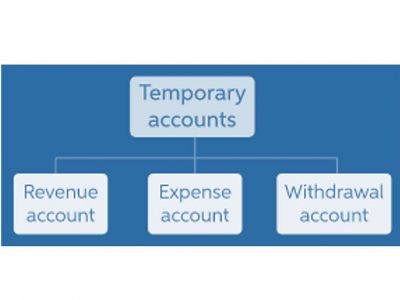
They must ensure that funding from donations (equity) is effectively allocated among various programmatic assets while managing operational liabilities. In this context, the accounting equation provides clarity on resource allocation and aids in maintaining trust with stakeholders, including donors and beneficiaries. On the other hand, long-term liabilities are obligations that are due beyond one year. These liabilities are often necessary for funding large capital expenditures, such as property or equipment, thus facilitating growth opportunities for businesses. Note that all assets will not be sold for the exact amount reported when a business is sold. For example, an asset of equipment valued at $50,000 may not be sold for $50,000 in a free market, possibly being sold for something less like $40,000 or something more like $60,000.

Understanding the Dunning Process: Key Insights, Challenges
- A high ratio of current liabilities to current assets could signal potential cash flow issues, thereby impacting the financial health and operational stability of the company.
- These may include loans, accounts payable, mortgages, deferred revenues, bond issues, warranties, and accrued expenses.
- Expense is the using of assets or incursion of liabilities as part of operations to generate revenue.
- The accounting equation is a core concept of modern accounting that states that a company’s assets are the sum of its liabilities and its shareholder equity.
- Current liabilities are obligations that are expected to be settled within one year.
- In conclusion, the accounting equation serves as a cornerstone of financial understanding.
The representation essentially equates all uses of capital or assets to all sources of capital where debt capital leads to liabilities and equity capital leads to shareholders’ equity. The accounting equation may be expressed as a guiding framework for evaluating a business’s performance and stability. By analyzing the components of this equation, individuals can assess how well a company is managing its resources and obligations. Assets represent the resources a business owns, liabilities indicate what the business owes, and equity reflects the ownership interest in the company. This interplay is critical; trial balance when assets outweigh liabilities, it signifies a financially sound operation. Conversely, if liabilities exceed assets, it could indicate potential financial distress.
- Cash is a form of payment while revenue represents the creation of value and the earning of compensation.
- Note that all assets will not be sold for the exact amount reported when a business is sold.
- Companies can foresee potential cash flow problems and resolve them before they affect operations.
- This measure directly reflects the company’s profitability over time and indicates how effectively management has utilized profits to grow the business.
- This misconception may hinder one’s ability to analyze long-term financial sustainability effectively.
Using Equations in Financial Analysis
This equation helps maintain clarity and reliability in a company’s financial reporting. Moreover, equity is not static; it fluctuates with the ebbs and flows of business performance. When a company is profitable, retained earnings increase, thereby boosting equity; conversely, losses the accounting equation may not be expressed as can decrease equity, signaling potential financial difficulties.
How to Gain Real-Time Visibility into Accounts Receivable
For example, publicly traded companies regularly report their financial status, showcasing how their assets and liabilities align with shareholders’ equity. This transparency not only satisfies regulatory obligations but also helps attract and reassure investors by reflecting a strong balance sheet reinforced by the adequate accounting equation framework. Moreover, insights from this equation can guide corporations in debt management to optimize their capital structure. This balance of assets, liabilities, and equity in the accounting equation emphasizes the principle that all resources must be accounted for, ensuring that a company’s financials remain in equilibrium. Any increase or decrease in assets must correspond with an equal change in either liabilities or equity.
For now, remember that equity represents net assets on a book value basis, assets minus liabilities. The shareholders’ equity number is a company’s total assets minus its total liabilities. It can be defined as the total number of dollars that a company would have left if it liquidated all its assets and paid off all of its liabilities.
Equity Definition and Examples
The equity section for a sole proprietor will be called owners’ equity and consist of one capital account. The equity section of a partnership will be called partnership equity and consist of two or more owners and therefore two or more capital accounts. The equity section of a corporation will be called shareholder’s equity, shareholders being the owners of a corporation, and will included capital stock and retained earnings. Although the format changes the equity section taken as a whole can still be thought of as what is owed to the owner or owners in each case. This is best illustrated by imagining we liquidate or close a business, selling the assets for cash, and then paying off the liabilities. The money left over would be equal to the equity section if all sales were made on a book value basis.

- In this context, the accounting equation provides clarity on resource allocation and aids in maintaining trust with stakeholders, including donors and beneficiaries.
- In reality, it’s a fundamental principle applicable to all business sizes and types, ensuring basic financial stability and accuracy.
- Grasping these concepts helps in analyzing balance sheets and making informed financial decisions.
- Additionally, a solid understanding of the accounting equation can enhance strategic decision-making.
- Both liabilities and shareholders’ equity detail how the assets of a company are financed.
Conversely, a lower ratio suggests a more stable financing structure, potentially leading to increased investor confidence. When assessing a company’s liquidity, analysts use the accounting equation as a baseline. By comparing current assets to current liabilities, analysts can gauge the entity’s ability to meet its short-term obligations. This relationship is critical during financial distress, as it directly reflects how quickly a company can convert its assets into cash. The accounting equation may be expressed as a tool for assessing risk; companies with high liabilities relative to their assets may face greater financial pressures during downturns.
- Assets represent the valuable resources controlled by a company and liabilities represent its obligations.
- While the accounting equation is foundational in financial accounting, it has its limitations.
- By understanding how equity integrates within the larger framework of the accounting equation, stakeholders can gain valuable insights into the company’s net worth and sustainability.
- Overall, liabilities are not inherently negative; rather, they play a crucial role in financial planning and strategy.
- Understanding assets, liabilities, and equity is crucial because they provide insights into a company’s financial health.
- Another important aspect of financial analysis that stems from the accounting equation is the derivation of key financial ratios, such as the debt-to-equity ratio.
Purchasing something on a credit card is an example of how a liability can be created, the transaction creating a future obligation to pay cash. It provides a snapshot of a company’s current financial position, but lacks forward-looking insights. Predicting financial outcomes requires additional analysis, incorporating trends, market conditions, and other financial metrics beyond the equation’s scope. In conclusion, the accounting equation serves as a cornerstone of financial understanding. For both accounting professionals seeking to refine their expertise and business owners aiming to bolster their financial acumen, mastery of this equation is indispensable.

Aging in Accounts Receivable: A Comprehensive Guide to Managing Cash Flow and Credit Risk
Business owners who grasp how their actions affect assets and liabilities will be better equipped to navigate financial challenges and seize opportunities. Improved financial literacy enables professionals to forecast future growth, budget effectively, and allocate resources wisely. As the business landscape continually evolves, staying abreast of how the accounting equation influences various financial elements is essential for both operational success and long-term sustainability. One prevalent misunderstanding is regarding the roles of assets, liabilities, and equity within the equation. Some may mistakenly believe that assets are solely comprised of cash and inventory, neglecting the wider range of resources that should be factored in. Consequently, this limited perspective may lead to inaccurate financial assessments and ineffective budgeting strategies.

Question: The accounting equation may NOT be expressed as *
By maintaining this clear separation, sole proprietors can better prepare for future investments, expansions, or transitions to other business structures. Liabilities are obligations that a business needs to settle, including loans, accounts payable, and mortgages. They represent things you owe others, and a common liability is a loan liability, which is reflected on the balance sheet. Ultimately, the balancing act represented by the accounting equation is crucial for ensuring that a business is accountable and transparent about its financial position. Maintaining this balance not https://duhocthanhtam.vn/what-are-retained-earnings-guide-formula-and/ only aids in compliance with legal standards but also fosters trust among stakeholders and investors.
